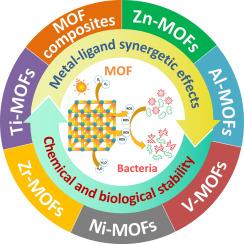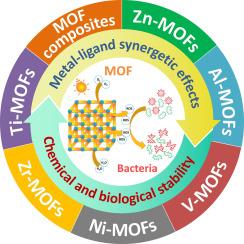基于金属有机框架 (MOF) 的光催化抗菌应用材料
IF 20.3
1区 化学
Q1 CHEMISTRY, INORGANIC & NUCLEAR
引用次数: 0
摘要
几十年来,人们合成了数以千计的金属有机框架(MOFs),并将其应用于气体储存、气体分离、催化剂、药物输送等众多领域。MOFs 具有大比表面积、高生物相容性和高光催化活性等特点,在抗菌方面具有巨大的应用潜力。然而,有关 MOFs 应用的报道还很有限。MOFs 的抗菌机制有两种可能性:成分释放和光催化。在此,我们综述了最近有关 MOFs 作为光催化剂应用于抗菌的报道。我们重点解释了催化剂的机理,并指出了将 MOFs 用作抗菌光催化剂的优势。我们还强调了这一领域仍然存在的挑战,并提出了继续开发这种材料的策略。本综述有望为 MOFs 在抗菌领域的发展做出重要贡献。本文章由计算机程序翻译,如有差异,请以英文原文为准。


Metal-organic framework (MOF)-based materials for photocatalytic antibacterial applications
For decades, thousands of metal-organic frameworks (MOFs) have been synthesized and applied in numerous applications such as gas storage, gas separation, catalyst, drug delivery, etc., offering a large specific surface area, highly biocompatible, and highly active photocatalytic, MOFs have great potential for antibacterial application. However, there are limited reports on this application of MOFs. There are two possibilities in the antibacterial mechanism for MOFs: components releasing and photocatalyst. Here, we review recent reports on MOFs that are applied as photocatalysts in antibacterial. We focused on explaining the mechanism of the catalyst and pointing out the advantages of using MOFs as photocatalysts in antibacterial applications. We also emphasize the remaining challenges in this field and suggest strategies to keep developing the materials. The present review is expected to provide a significant contribution to the development of MOFs in the antibacterial field.
求助全文
通过发布文献求助,成功后即可免费获取论文全文。
去求助
来源期刊

Coordination Chemistry Reviews
化学-无机化学与核化学
CiteScore
34.30
自引率
5.30%
发文量
457
审稿时长
54 days
期刊介绍:
Coordination Chemistry Reviews offers rapid publication of review articles on current and significant topics in coordination chemistry, encompassing organometallic, supramolecular, theoretical, and bioinorganic chemistry. It also covers catalysis, materials chemistry, and metal-organic frameworks from a coordination chemistry perspective. Reviews summarize recent developments or discuss specific techniques, welcoming contributions from both established and emerging researchers.
The journal releases special issues on timely subjects, including those featuring contributions from specific regions or conferences. Occasional full-length book articles are also featured. Additionally, special volumes cover annual reviews of main group chemistry, transition metal group chemistry, and organometallic chemistry. These comprehensive reviews are vital resources for those engaged in coordination chemistry, further establishing Coordination Chemistry Reviews as a hub for insightful surveys in inorganic and physical inorganic chemistry.
 求助内容:
求助内容: 应助结果提醒方式:
应助结果提醒方式:


